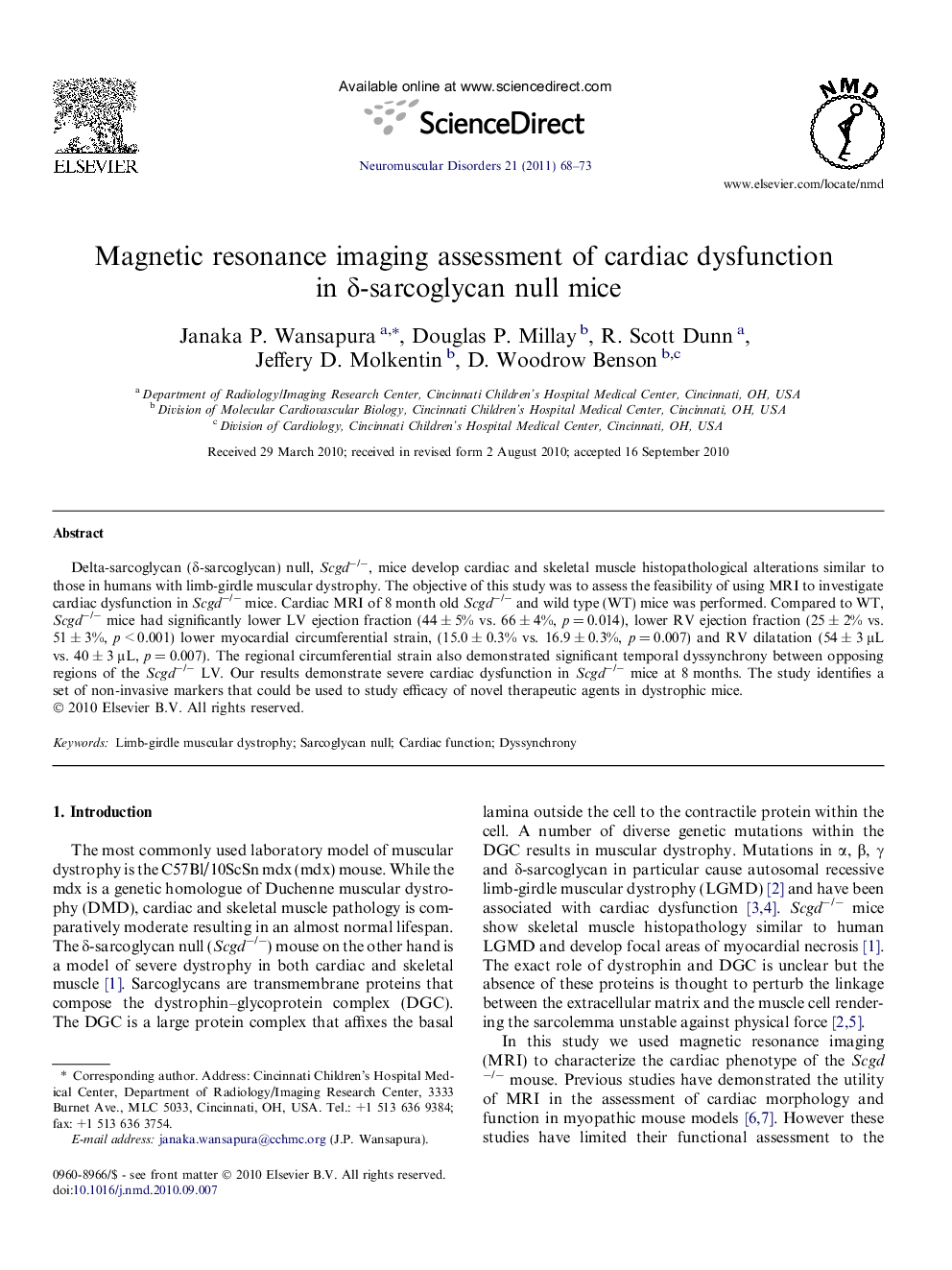| Article ID | Journal | Published Year | Pages | File Type |
|---|---|---|---|---|
| 3079449 | Neuromuscular Disorders | 2011 | 6 Pages |
Delta-sarcoglycan (δ-sarcoglycan) null, Scgd−/−, mice develop cardiac and skeletal muscle histopathological alterations similar to those in humans with limb-girdle muscular dystrophy. The objective of this study was to assess the feasibility of using MRI to investigate cardiac dysfunction in Scgd−/− mice. Cardiac MRI of 8 month old Scgd−/− and wild type (WT) mice was performed. Compared to WT, Scgd−/− mice had significantly lower LV ejection fraction (44 ± 5% vs. 66 ± 4%, p = 0.014), lower RV ejection fraction (25 ± 2% vs. 51 ± 3%, p < 0.001) lower myocardial circumferential strain, (15.0 ± 0.3% vs. 16.9 ± 0.3%, p = 0.007) and RV dilatation (54 ± 3 μL vs. 40 ± 3 μL, p = 0.007). The regional circumferential strain also demonstrated significant temporal dyssynchrony between opposing regions of the Scgd−/− LV. Our results demonstrate severe cardiac dysfunction in Scgd−/− mice at 8 months. The study identifies a set of non-invasive markers that could be used to study efficacy of novel therapeutic agents in dystrophic mice.
